HOME > Basketball
Chuck|55 lens in-depth analysis: Reasons why Collins’ performance was not as good as expected&&;Follow-up optimization plan
12:35pm, 7 November 2025【Basketball】
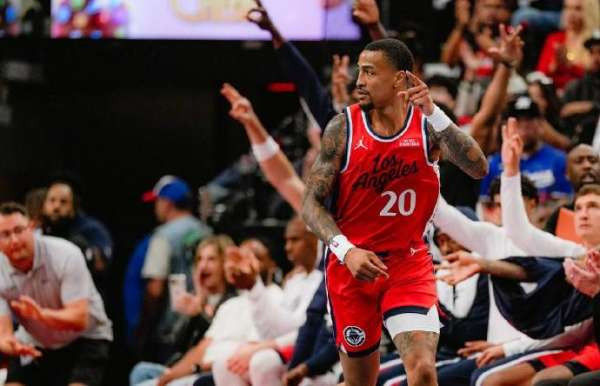
What is the team's understanding of Collins?
Before talking about this issue, we might as well take a look at "the highest rotation position that Collins can obtain".
PJ starts, 30+ playing time;
Toha starts, 30+ playing time;
Hachimura starts, 30+ playing time;
For a team, the rotation status of the "main power forward" is roughly the same. Obviously, in the past, whether it was the Hawks or the Jazz, Collins' rotation status was basically the same.
This season, while Collins was fixed on the bench, his playing time was only 24.3 minutes - the same as Coffey and Jones last season. There are several factors that restrict Collins' playing time: substitute, not the first substitute to come on every game, not every game into the closing lineup (but with higher priority).
Obviously, compared to the "main power forward" - such as the 77 version of the Mavericks/Pistons' understanding of PJ/Toha. The team's perception of Collins is actually more inclined to be a "substitute inside scorer" - the Bucks' perception of Portis.
The reasons leading to the result are roughly as follows:
Collins’ type and technical characteristics are more effective than defensive and is a very typical inside play;
Bill is currently in the starting lineup, and the Clippers are unwilling to let the starting defensive intensity drop significantly. level, allowing Bill to shoulder an overweight leading defense task, and still have to continue the "old starting logic" instead of exploring a "new starting order";
Under the current team's understanding, they have jointly led to a result: the fifth starting player needs to have first-line leading defense and blue-collar attributes.
However, there is currently a very serious problem: Bill's state, inability to get the ball with his starting partner, and tactical status have resulted in a clear gap between him and Powell last season. This, coupled with Zubac's state, has led to a significant decline in the quality of the third and fourth players in the starting lineup, putting the Clippers in a dilemma of "continuing the 'old starting logic' but being unable to continue the 'old starting intensity.'"
What about Collins, whose time was reduced on the bench? With more partners from Da Luo, who is theoretically more suitable, will Collins get the cover rights he deserves and deliver a good enough performance in a unit of time? The answer is no.
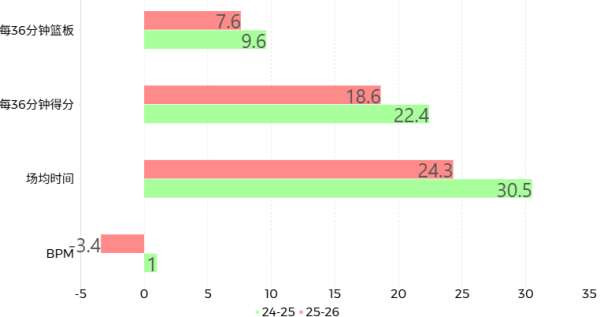
The weakening of the rotation status and the decline of unit time have jointly led to Collins' "contribution obviously unable to match the salary." Although the contract already carries a certain premium, his rotation status and performance per unit time have been reduced, resulting in Collins' contribution so far not being even half of his contract. Coupled with Bogdan's abandonment, this has resulted in the Clippers' highest-paid contract and the fifth-highest salary in the team being both seriously premium contracts whose "contribution obviously cannot match the salary", causing serious problems in the team's salary structure.
So, under the current team positioning of "substitute inside scorer", what is the reason why Collins did not perform well enough per unit of time? , what are the shortcomings and room for optimization in the team’s use and its own performance?
In terms of team use, what areas need to be optimized?
1. Too low a screen play
If you want to outline Collins' "player portrait" in the most concise language, it is essentially to add the skill package of screen finishing, low post offense, and off-ball screens (newly developed last season) to the skeleton of the "off-ball frontcourt".
The strong screen finishing ability is obviously one of Collins' core competitiveness on the offensive end. As mentioned before, Collins has really achieved the performance of being the league's number one screen terminator-under the premise of getting a lot of screen rights next to a guy who averages 16 pick-and-rolls per game. Moreover, throughout his career, Collins scored 1.28 points per possession in pick-and-rolls. Even compared with the center, it is still very good.
But in the Clippers, Collins has an obvious problem of being arranged to set up cover scenes on the line. The important reason for being able to accept Collins as a substitute before was to partner with Da Luo. Collins could theoretically get more cover authority, but in fact Da Luo is still the stable first screener of the second team.
According to my statistics, a puzzling but very consistent statistic: Of all 60 shots Collins has taken so far, only 5 have come from pick-and-roll receptions (if you include errors and assists after the ball, there are only about 8 times) - this is simply a denunciation of nature, especially when Daluo has almost no threat down the line.
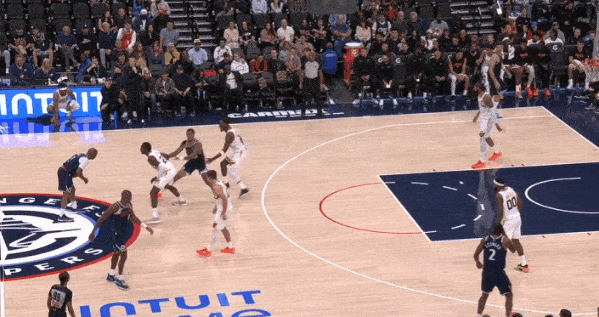
Two of these three screen-ending rounds were scored against the center rim protector, still showing his background as a powerful finisher.
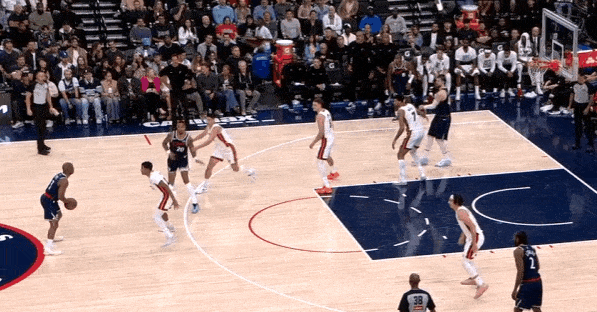

Of course, there is the factor that the opponent's center sometimes confronts Da Luo, and letting Da Luo serve as a screen can better dispatch the opponent's frame protector. But first, is it possible to increase the frequency of some double-cover plays? It can not only have the effect of dispatching the frame protector, but also allow Collins to make up for the explosive power that Luo does not have, and the two can flexibly choose to move down or outside, and there will be no mutual exclusion.
Secondly, the Clippers have had a situation in more than one game where "the opponent clearly used a center to guard Collins by mistake, but still 'mechanically' let Luo step forward to cover." This is no longer a problem of using or ignoring Collins, but a serious problem with offensive targeting.
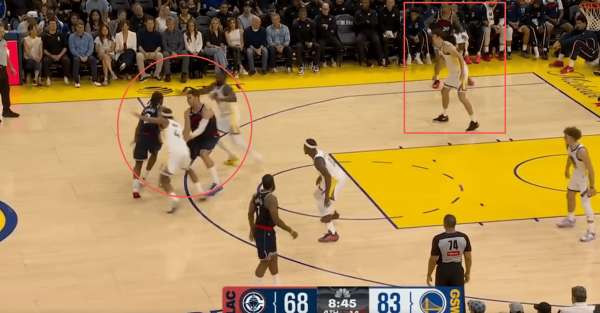
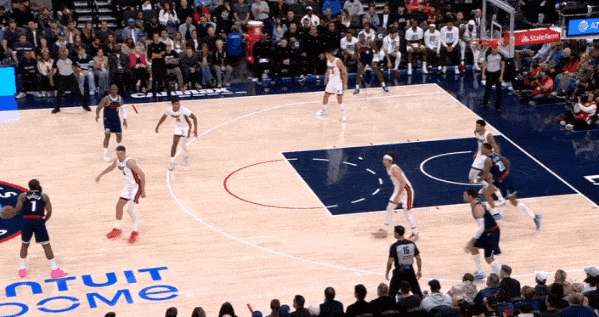
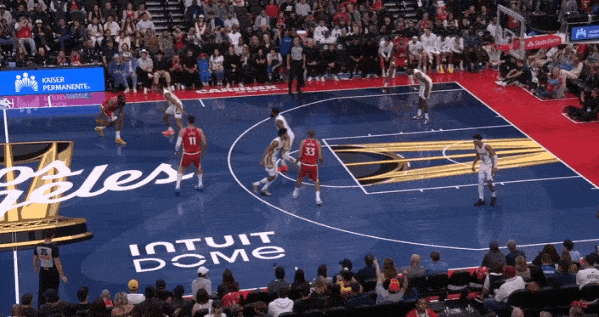
In the game against the Warriors, Post made a lot of mistakes in guarding Collins. However, the solution given by the Clippers in the second quarter was actually to make Collins play hard in the low post and shoot three-pointers from the top when Collins was more static and suffered from absolute physical disadvantages, instead of using the impact and athletic ability of the screen to attack Post - a good example of "exploiting weaknesses and avoiding strengths.".
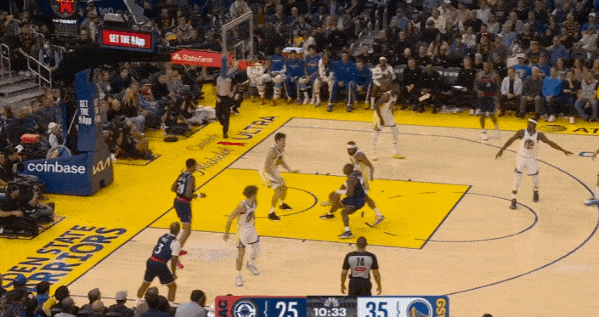
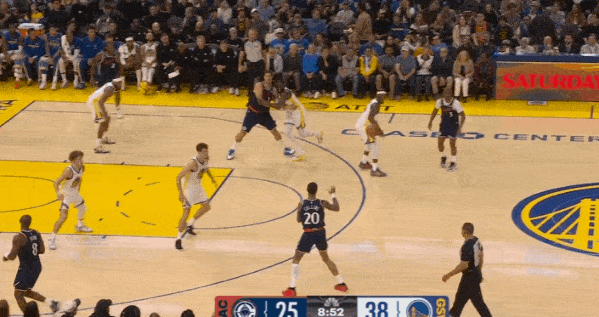
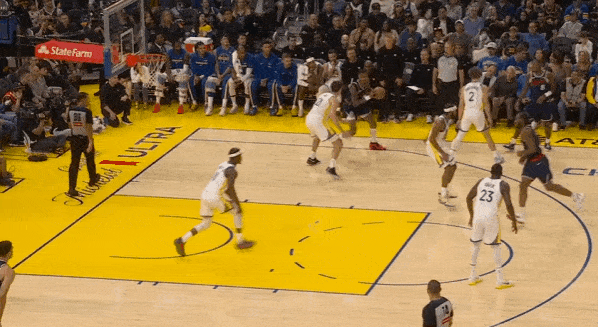
2. Harden is more suitable to drive Collins's brain
Paul's current instigating value on the offensive end is not as good as before. He and Dunn are essentially "disposing" attributes more than instigating attributes on the passing and controlling end, and the offensive threat with the ball is not A small guard who is both strong and lacks the ability to contain the ball without the ball will inevitably lead to a certain degree of overlap between the two. The Spurs' method last season was to have Paul share the court with backcourt attackers such as Vassell and Castle. This is why I said before that if Paul is to be used, it is best to ensure that he shares the court with at least 1-2 of Bill, Bogdan and Leonard.
At the same time, for Collins, who needs the ball - more accurately, the finishing power - to exert his offensive value, he essentially needs an "instigator" to drive himself more than "setting up the plate" to get more finishing opportunities. This is why I specifically emphasized in the preseason that I regretted not seeing Harden, Collins, and Luo in the same lineup.
These are the two major contradictions in the current second team, and they are also an important reason for the crazy points loss during the period when Paul was in charge and Leonard was leading the team.
For Collins, compared to Paul, he is obviously more "at home" when playing with Harden, who has a stronger personal offensive threat and instigation ability, and relatively less emphasis on "pressing the position". In the most popular terms, for Collins, who needs more "ending rights" to maximize offensive value, he needs to get as much "big core bonus" as possible.
When Collins and Harden are on the same court, the scoring will be significantly improved (although there is a factor of more accurate three-pointers), the efficiency at the basket will skyrocket, and the turnover rate will plummet.
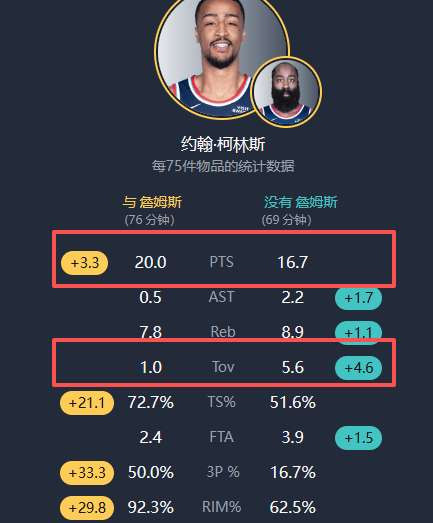
Breaking down the few hours in which Collins has performed well, you will find that they are all on the same court with Harden:
vs. the Trail Blazers at the end of the first quarter,
had to switch offense until Sharp was out of position, returned the ball to Harden, then took advantage of the screen and then immediately 'Slip", working with Harden on the strong side to punish mismatches.
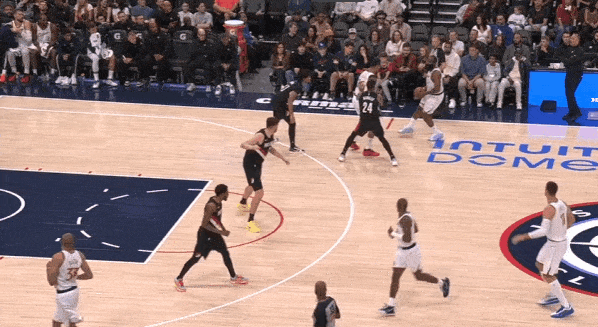
received a pass from Harden to launch a transition attack.
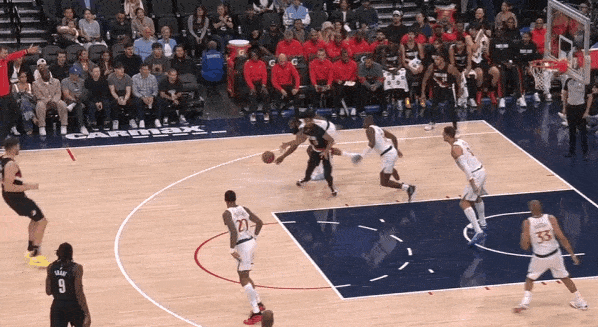
vs. Pelicans in the middle of the second quarter,
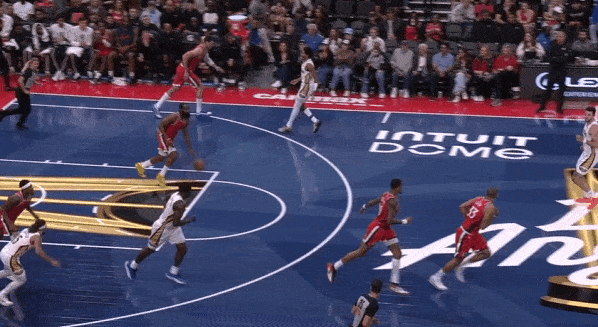
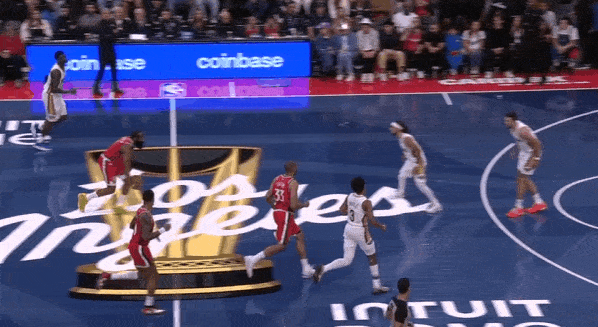

vs. Thunder Section 2,

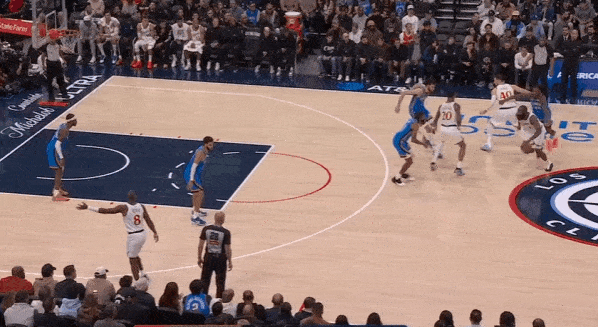
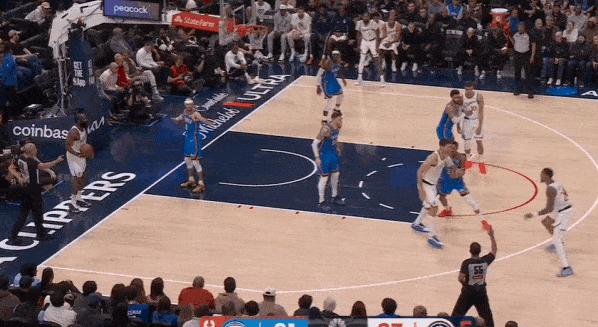
3. Inefficient one-on-one duels at the same position should be avoided
If we talk about Collins' "tactical status" In fact, it is more in the low-post offensive round.
The Clippers will still set up some low-post tactics for him, but is this really a good thing? - Collins has played too many inefficient singles in the same position, which has led to his low-post efficiency so far.
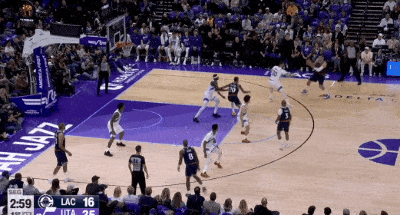
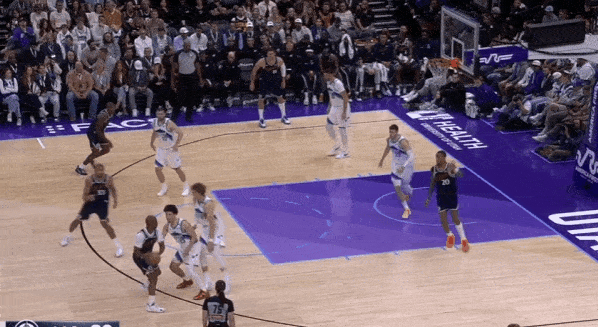
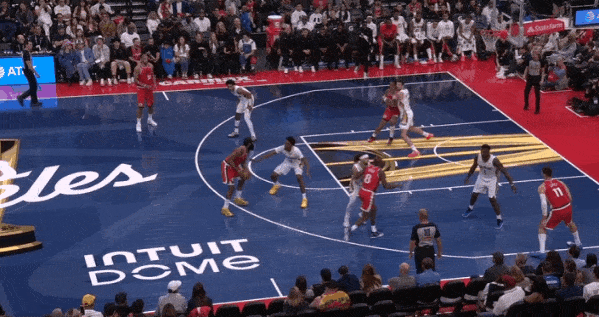
It was mentioned in the previous scouting report that Collins' various "small skills" have a lot of room for improvement. His low-post footsteps and skills obviously cannot support him to efficiently complete a large number of one-on-ones at the same position - his past low-post efficiency can also prove it. .
For Collins, low-post offense should be the "by-product" of the opponent's misalignment after the pick-and-roll and "touch screen" in the early offensive stage, or the low-post penalty of causing the opponent's misalignment through off-ball screening.
Inefficient one-on-one duels should be avoided. Collins' low-post attack should be more like the one shown below.

For example, in this round, although the execution process did not help Collins successfully get out of position, he at least tried in the starting stage.
{16 4}
4. Where are the screen finishes developed by the Jazz?
The Collins scouting report I wrote highlighted:
"Under the Jazz's off-ball passing system and Will Hardy's training, Collins increased a large number of ball-free screen finishes last season. This is also one of the reasons why his proportion of non-wide-open three-pointers has increased.
It can be seen that during the Hawks era, Collins had almost no tactical scenes where he used screens without the ball. In the 24th season, Hardy had begun to let Collins try a small amount, and in the 25th season, he further increased the frequency to 2.2 times. In terms of overall production efficiency, just in terms of last season's performance, it can be said that Collins has developed this skill now. "
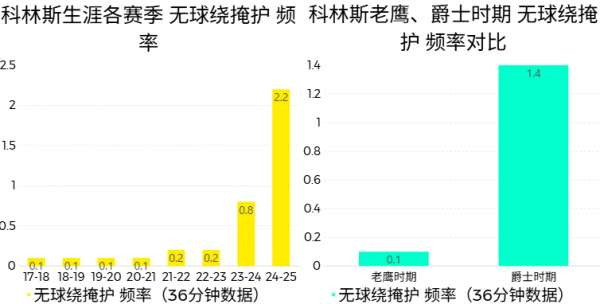
Launched 2.2 off-ball screens every 36 minutes. This statistic ranked second among all inside and center players last season, second only to Wenban.
And compared to Wenban's 0.96 points per round, Collins scored 1.2 points per round. Overall efficiency, Collins's scoreless performance last season The ball-covering offense is the best among all interiors and centers in the league."



Obviously, unlike continuing the Jazz's transformation of Dunn, the Clippers currently do not seem to intend to continue the new "skill package" developed by the Jazz on Collins.
Judging from Collins' low post skills, footwork and past experience, is it really as profitable to let him play a low post as to let him execute a screen finish? Not necessarily.
5. In terms of its own performance, what did Collins fail to do well?
Very poor fixed-point offensive performance
In the case of Collins' three-point output at the beginning of the game was extremely low and inaccurate (it has shown a trend of improvement in recent games), the follow-up processing of fixed-points can also be described as a complete mess. This has also resulted in his fixed-point points per round this season being only 0.7, and his turnover rate in fixed-point offensive rounds as high as 17.4%. By comparison, Collins's two items were 1.05 and 9.4% respectively last season.




And this is a problem that began to be exposed in the preseason.



Extremely poor turnover control
Collins' turnover rate reached an intolerable level last season.
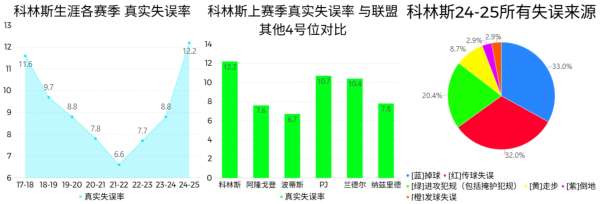
This season, the Clippers have a trend of further deterioration. They contribute 3.6 turnovers with only 1.3 assists every 36 minutes, which is a very scary thing. The scouting report said that Collins' ball-protecting skills have obvious flaws, and there is also a lot of room for improvement in various small skills..


The fixed-point follow-up processing just mentioned above is also an important source of Collins' mistakes this season.

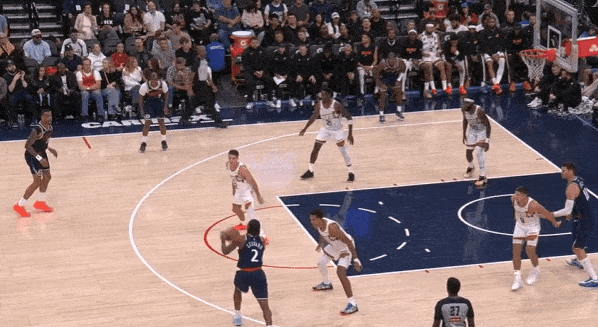
Of course, Collins' offensive end obviously cannot be all problems. For example, after the worst finishing performance at the basket in his career last season, Collins' finishing at the basket has made a strong recovery this season.
For another example, he can still provide good transition offensive vitality when he is on the court. For the Clippers who play "turtle basketball", this is obviously a very scarce game content, and before today, the score per round was an excellent 1.53 points.
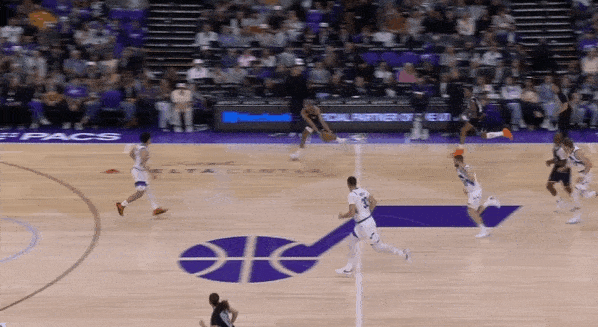
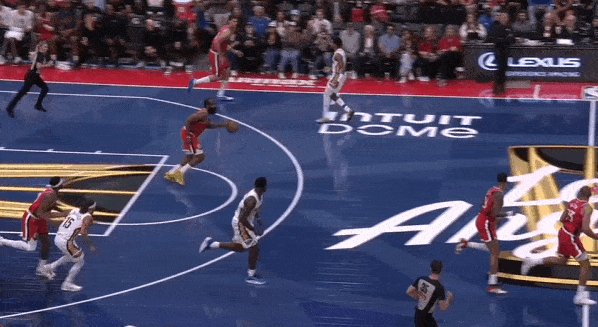
and Collins showed excellent offensive rebounding energy in the opening stage, grabbing at least 2 offensive rebounds in each of the first 4 games (a decline in recent games).

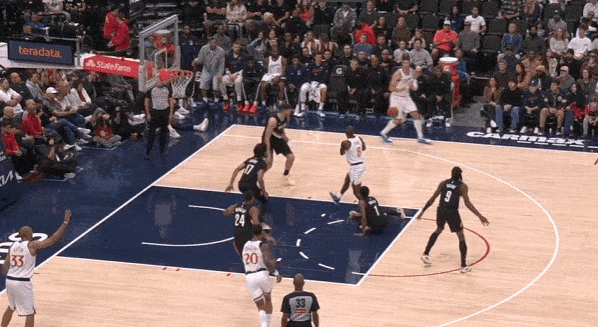

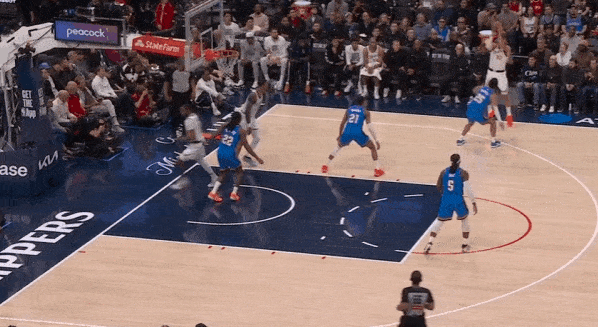
Problems on the defensive end
Since he came to the Clippers as a substitute, the team was not inclined to let Collins take on a lot of difficult matchups. Therefore, so far this season, Collins has mainly faced off against the opponent's supporting frontcourt on the single defense end, and occasionally against the frontcourt arrow.

On this basis, the degree of completion as the "second defense core" is very important, because this basically directly determines Collins' comprehensive defensive contribution. But so far, Collins' performance as the "second defensive core" has obviously failed, and his presence in protecting the frame is very thin.
It was said in the previous scouting report that Collins' "passing line" on the defensive end is the level he was in the Hawks. But not to mention the Hawks, Collins' participation in rim protection has dropped significantly compared to the Jazz period (although there is a factor that this season is completely fixed at the power forward position, compared with previous seasons when he had more or less center roles, there will naturally be fewer situations in the rim protection position).
Obviously, it failed to achieve one of the original important goals of the Clippers in wanting to introduce a full-sized power forward and improve the shortcomings of the team's lineup.
So far this season, Collins has only attempted 12 attempts to protect the frame, which is not even as good as Paul, with only 2.8 attempts every 36 minutes - even though based on perception and data, Collins' success rate in attempts to protect the frame is extremely high.
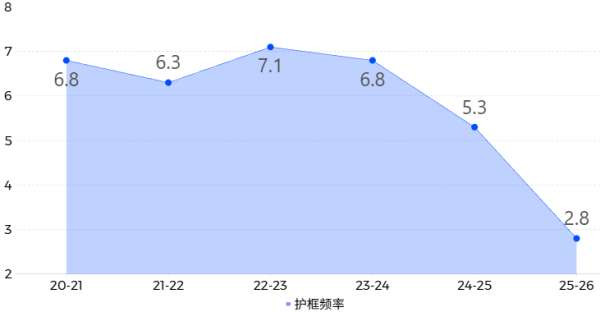
Dallo was delayed in going out. Collins, as the LowMan, recovered the cushion to avoid being penetrated under the basket, and then quickly defended Bei on the outside. There should be more of these plays - something the Clippers hoped he would do more of when they brought him in.
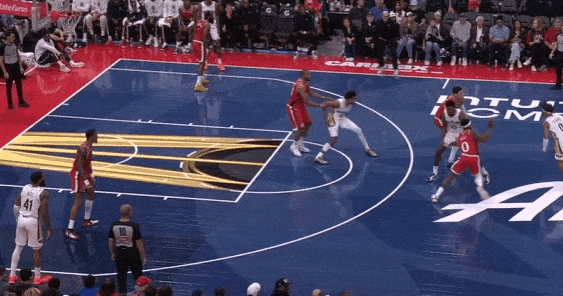
At the same time, Collins recovered rebounding energy well in the opening stage, but has also shown signs of decline in recent games. Obviously, Collins' current performance as a "downline defender" is seriously insufficient.
Without a large number of difficult matchups and low investment in assisting defense, there will occasionally be situations where the defensive attention is attracted by the ball and cannot take into account the opponent (especially in the second half).
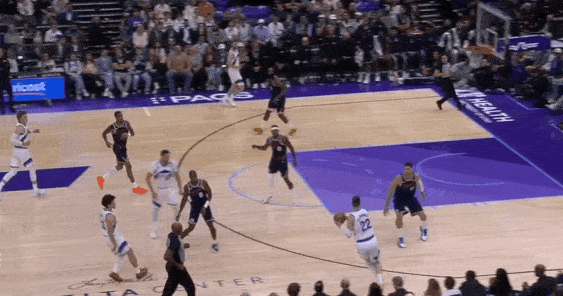



As well as problems that will expose defensive skills in some single defense and defensive rounds.
For example, in these two rounds of defending Zion, first of all, the defensive position is very strange. Generally speaking, when players take the ball from the sideline, they adopt targeted defensive positions by "driving players to the sideline" and "forcing players to go to their non-dominant hand side." However, Collins' defensive position is more like "inducing Zion to use his dominant hand to walk in the middle" and "putting Zion in to face the frame protector."
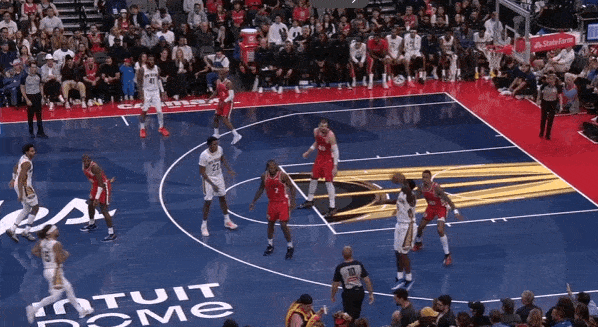

For example, in this round, Butler made a small fake move to the left, and Collins directly raised his left foot. As a result, Butler changed his direction and broke through to attack the front foot. The "remedial measure" here should be to quickly turn your hips and then use your feet (sliding step, cross step) to follow up. But Collins did not do this. Instead, he immediately wanted to grab Butler with his hands, and then started "chasing his butt" after being freed.

Although the position and body shape are different, you can refer to how White used his skills to remedy when he was attacked on the front foot.
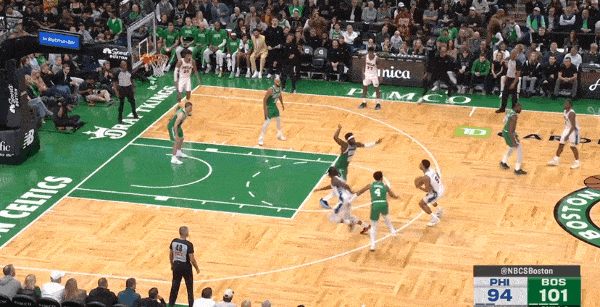
The pursuit of the ball without the ball was completely blocked by the screen wall.
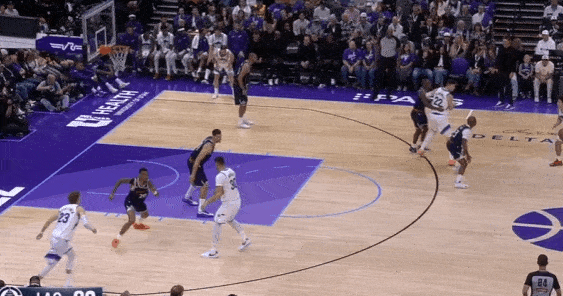
Grant pretended to use Holiday's screen. Collins was misled and moved his left foot back a small step. Grant directly "rejected the screen" and broke through to the left to attack with his front foot. Collins suffered a loss in the first move. He could barely follow up with the small "buffer space" left at the beginning, but he was shaken off during the subsequent follow-up defense and continuous lateral sliding.
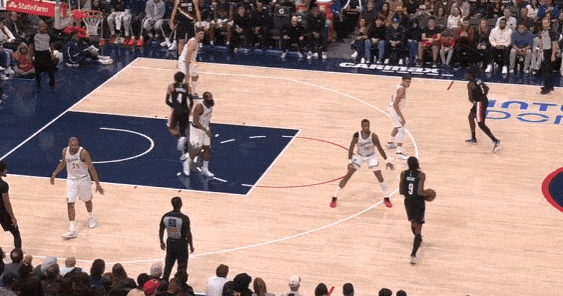
The rotation defense was directly missed by Aaron Wiggins and Fontechio.
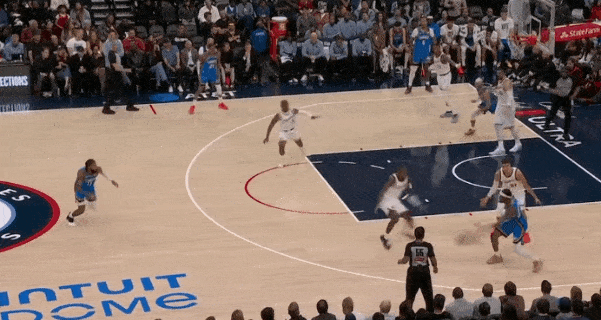
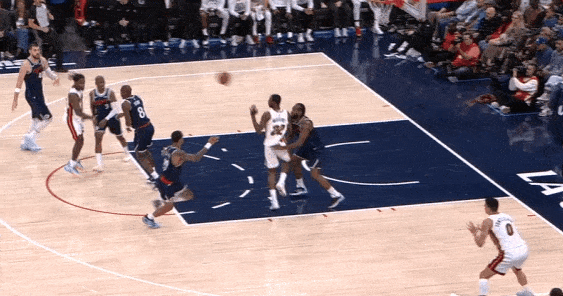
Optimization plan
Team usage
Rotation
If you don't take into account the factor of contract year price reduction, I can't understand the Clippers' contempt for Collins at all - this is a player who you take Powell for a second rotation, has the highest salary outside the card, and is qualified to compete for the fourth man in the team.
Whether it is from the perspective of player level, salary, acquisition cost, scarcity of team positions, or from the perspective of providing athletic ability and vitality to the elderly team, Collins deserves a higher rotation status. At least he should not only be in the same rotation status as Kofi, and his average playing time per game should not be less than 28 minutes. And it is imperative to get in touch with the main players and accumulate chemical reactions.
Theoretically, Collins is also more suitable to partner with Harden, who has a stronger "instigation ability", to maximize his finishing and pick-and-roll abilities as an inside deputy attacker, rather than Paul, who is more "disposing". But considering that Collins is currently serving as a substitute, it is not easy to bind Harden to a high degree.
If Bill's condition has not improved or he has suffered frequent injuries, the team has been stuck in the dilemma of "continuing the 'old starting logic' but being unable to continue the 'old starting intensity'". Then it is necessary to find a starting solution for Collins, such as Dunn/Jones + Collins. As mentioned in the previous review of the Trail Blazers, this is also the current team's more imaginative lineup on the defensive end (especially if Collins can improve the defensive performance), and it can also provide the team with vitality and athletic ability.
But these two sets are only "relative solutions" and have their own hidden dangers:
The hidden danger of Dunn + Collins lies in their fixed-point offense and weak-side response level - especially since Collins' fixed-point performance has been very poor so far this season, and he also has to adapt to a lineup without Dunn, so Dunn has been severely targeted.
Jones + Collins means that the team's current performance in controlling errors is extremely poor and the starting lineup will no longer have the role of "second point guard". At the same time, Jones and Collins are both players who use the "off-the-ball frontcourt" as their offensive base, and there will still be more or less overlap.
Usage on the offensive end
The team needs to try to let Collins play the role of "terminator", appropriately reduce the "free play" of holding the ball and half-holding the ball, and while giving full play to his finishing advantages, try to avoid high turnover problems and his own "minor technical" flaws.
Collins needs to get more screen roles on the line, especially when he is on the same court with Da Luo. More roles as a cover terminator can not only play to his strengths in finishing and pick-and-roll, but also avoid the problem of too many mistakes to a certain extent. When Collins is misguarded by the center, you must be keen and resolute to position Collins as the first screener. It can increase the direct multi-cover cooperation between Collins, Luo and the ball holder.
Reduce inefficient one-on-one duels at the same position. Low-post offense should be a by-product of pick-and-roll mismatches. If you want to play, try to create mismatches through off-ball starts.
You can try to continue the off-ball screening skill package developed by the Jazz. After all, the efficiency is very good.
Corinth's own level of
's extremely poor fixed-point processing and unbearable high turnovers are problems that Corinth itself must solve quickly. At the same time, Collins needs to try to maintain the vitality of plundering the front plate in the first few games of the season. The decline in front plate vitality in recent games is not a good sign.
When I was doing the first version of the new player report on Jones, I mentioned a word: "defensive gene." Obviously, Collins is a player who does not have the "defensive gene". Whether it is defensive skills, defensive habits, or some problems that existed during the Hawks and Jazz periods, Collins needs to make systematic adjustments and improvements under the supervision of the team.
Without taking on a large number of difficult matchups, Collins' current level of completion as a "downline defender" is not high enough, which is obviously different from the team's expectations when they introduced him. The level of investment in assisting defense, rebound protection, and concentration in off-ball defense are things that Collins himself must improve.
Related Posts
- As expected! Reporters posted netizen prediction votes: 60% successfully predicted that James would not announce his retirement.
- A star who may retire in the NBA in the past five years. Time always says goodbye
- +1! The fourth player this summer goes abroad and joins the overseas league and is expected to become the next Yang Hansen
- Adebayo s girlfriend is too strong: He won 6 consecutive victories with 30+16, breaking the record and becoming the first person in WNBA history
- The Chinese men s basketball team will see a blowout talent in the next Olympics, and Yao Ming s dividends will gradually be reflected!
- NBA Rockets News: Renewal with Tate
- Wiggins takes a family on vacation and earns 250 million yuan. The Lakers want to trade him, and his wife has a good figure
- Heroes cherish each other! Pierce praised Kobe as the second Jordan, saying that defending him is very stressful
- NBA Playoffs: Unexpected 3-1, Kaiyong is in trouble, Nuggets Thunder King Mountain
- Chasing dreams and mocking Dillon was criticized by American netizens! James was caught in a gunfire!
Hot Posts
- As expected! Reporters posted netizen prediction votes: 60% successfully predicted that James would not announce his retirement.
- A star who may retire in the NBA in the past five years. Time always says goodbye
- +1! The fourth player this summer goes abroad and joins the overseas league and is expected to become the next Yang Hansen
- Adebayo s girlfriend is too strong: He won 6 consecutive victories with 30+16, breaking the record and becoming the first person in WNBA history
Recommend

Mike Brown: Hooker Boldi is extremely athletic and his little hook finish is great.

The Celtics, the team that won the most NBA championships, officially changed hands, and the son of the gambling king, He Youjun became one of the shareholders

The Eternal Purple Gold Legend! The Lakers officially posted 15 tweets to celebrate Kobe s birthday & Mamba Day!
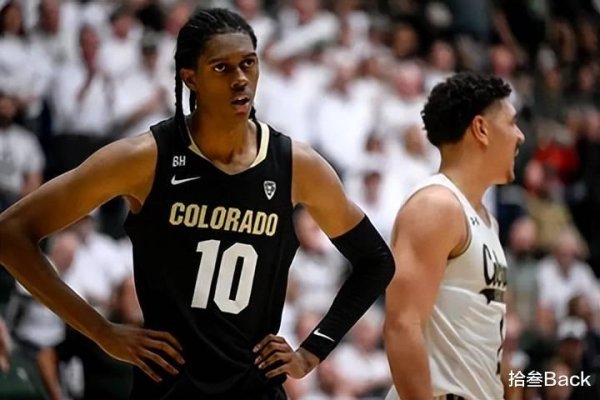
The two little brothers, AJ and Cody both played amazingly, but the situation of the big brother is hugely different

Sichuan Super League is in progress: three teams won their first goal, Chengdu defeated Bazhong 5-0, and Dazhou defeated Nanchong
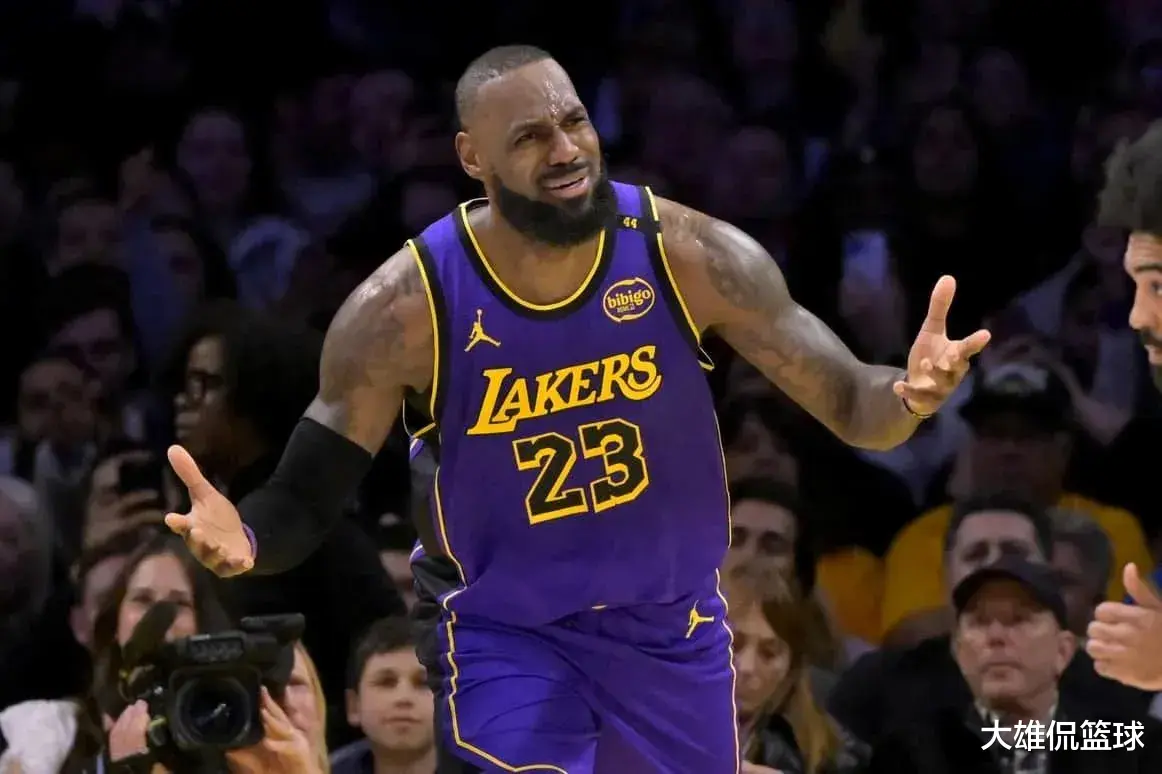
Former NBA player demands retirement and says he won t get a fifth ring unless he buys one

Brown: Brunson& & Bridges played about 34 minutes, which is equivalent to the regular season time
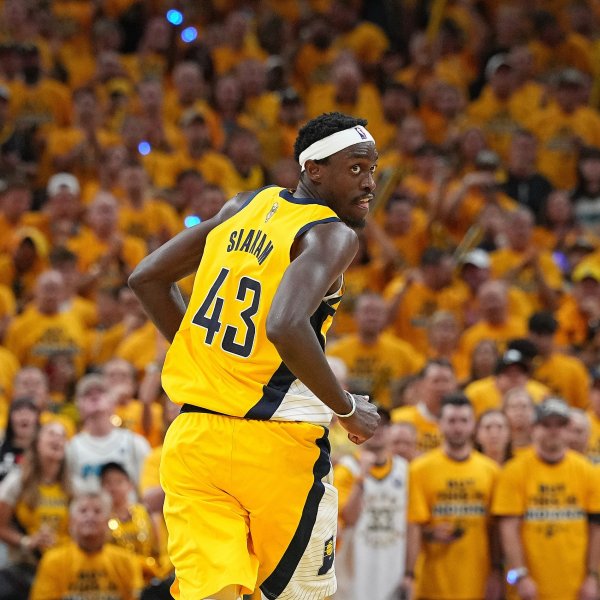
Mai Suifeng: If the Pacers win the championship, Siakam is the FMVP in my heart, he is the team s eye